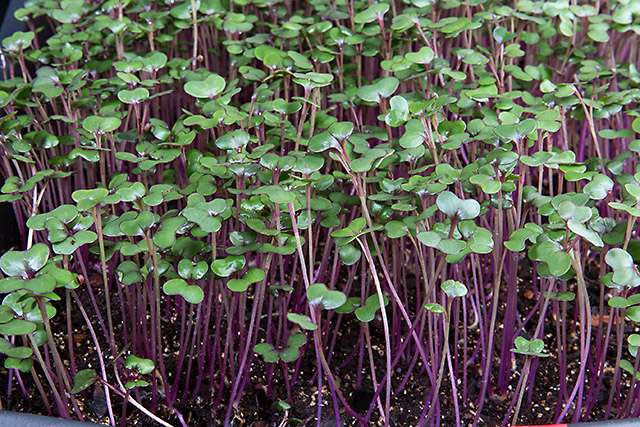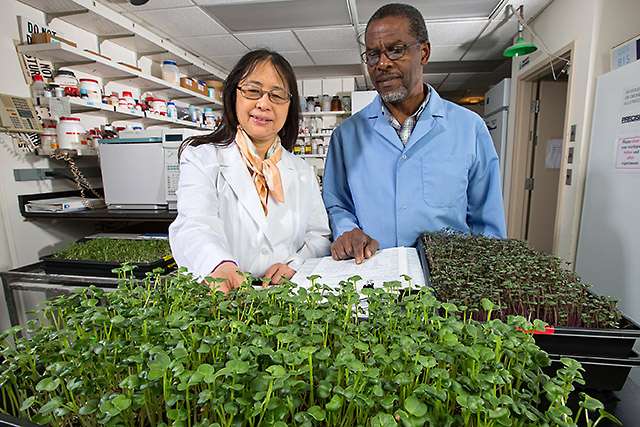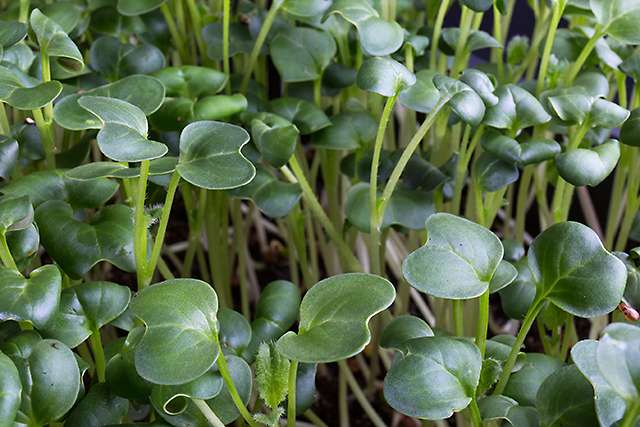Science confirms—you really should eat your Brassica

"Microgreens" is the name for vegetables and herbs harvested for food as tiny seedlings. Says Agricultural Research Service (ARS) food technologist Yaguang (Sunny) Luo, "Microgreens are an emerging class of specialty fresh produce that has gained popularity with chefs and consumers in recent years and could have a positive impact in the diet."
Luo headed a team of scientists at the Food Quality Laboratory in Beltsville, Maryland, that analyzed the mineral content of 30 different microgreen varieties donated by a commercial microgreen grower. Collaborating with Eton Codling, an agronomist from the Adaptive Cropping Systems Laboratory, and Zhenlei Xiao, a postdoctoral researcher working with Luo, the team focused on Brassica microgreens, such as arugula, broccoli, kale, radish, red cabbage, and wasabi. Brassica vegetables contain phytochemicals, vitamins, and minerals that are important to human health.
The team analyzed the microgreens for levels of calcium, copper, iron, magnesium, manganese, phosphorus, potassium, sodium, and zinc. These minerals play crucial roles in various biological processes in both plants and animals. In humans, mineral deficiencies can cause metabolic disorders, organ damage, disease, and even death. For example, the importance of calcium and magnesium on bone health is well known, and deficiencies in these minerals can lead to osteoporosis.

Luo's research team found that mineral concentrations varied among the different microgreen types. The most abundant element found in all the microgreen samples was potassium, followed by phosphorus, calcium, magnesium, and sodium. Potassium values were highest in wasabi microgreens and lowest in daikon radish microgreens.
"Savoy cabbage microgreens have the most calcium—98 milligrams per 100 grams fresh weight—of any of the 30 Brassica microgreens studied," says Luo. "On the other end of the spectrum, peppercress has the least, with 39 milligrams per 100 grams. If getting enough iron is important for a particular person, then purple kohlrabi microgreens may be a good addition to the diet, with 0.75 milligrams per 100 grams fresh weight."
Vegetables are rich sources of vitamins, minerals, and dietary fiber. Studies of the nutrient profile of these and other foods helps consumers meet their dietary goals.


















